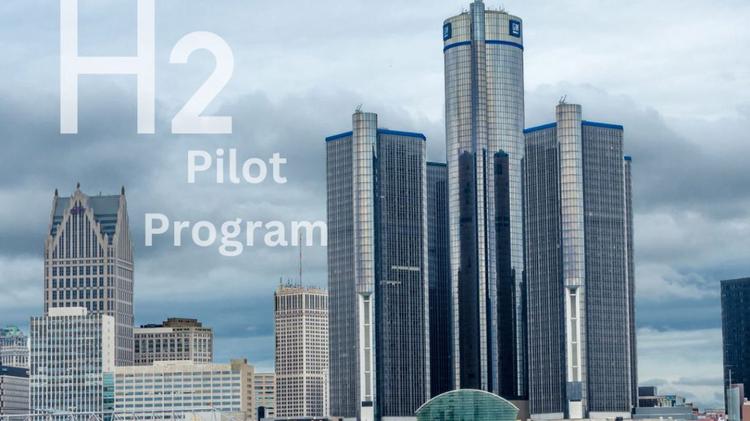
H2 is gaining an increasing spotlight as General Motors moves forward with clean energy
General Motors’ (GM) electrification strategy is increasingly focusing on hydrogen fuel cells as promising technology that is quietly but significantly altering the company’s approach to clean energy.
The automaker is incorporating H2 into technology for a growing number of applications
GM’s latest foray into the realm of low-emission worksites involves a bold step that could redefine how we perceive the integration of fuel cells into our daily operations.
Among its current projects includes a fleet of medium-duty fuel cell trucks with hydrogen fuel cells that could one day provide the foundation of an H2-powered worksite ecosystem. These trucks are built on the design of the 2024 Chevrolet Silverado 5500 MD and have moved beyond the level of experimental toys. They’re real-world contenders for changing the game.
Fueled by GM’s HYDROTEC H2 fuel cell systems, they promise a driving range exceeding 300 miles, carrying the weight of an 8.84-ton Gross Vehicle Weight (GVW) rating. Moreover, when compared to their battery electric counterparts, they are exceptionally powerful. They achieve a notable 300 kW peak power, thanks to their native 800V architecture.
Testing the hydrogen fuel cells for real-world use
The development of these vehicles isn’t just a matter of trying to make headlines or create something flashy. This technology sets the stage for a revolutionary microgrid project, much of which is currently taking place at a power plant in Georgia.
In this real-world testing ground, GM, Southern Company, and Nel ASA are joining forces to weave a tale of sustainability. The microgrid’s role is fascinating—it produces green hydrogen during the quiet hours of low electricity demand, only to flex its muscles and power the site when grid power hits its peak cost.
Checking feasibility boxes
The GM hydrogen fuel cells project is moving beyond the basic level of testing to make sure the technology works. It now includes efforts to make the tech practical and affordable. That being the case, the project is working to check all the critical boxes, such as cost-effectiveness and low- or zero-emission solutions.
Since the hydrogen fuel cells themselves don’t produce carbon emissions, the key is in the type of H2 used to run them. Therefore, the key is in the generation of green H2, aligning with electricity demand needs to boost sustainability.
The hydrogen fuel cells pilot program
The GM Fuel Cell Pilot Program brings together innovation and sustainability as clean energy solutions. These fuel cell-powered trucks, when used under real world circumstances, are not only being tested for their function, but also represent a kind of declaration of intent.
This intent includes the reshaping commercial and industrial settings using alternative energy approaches. These are some of the areas where the mitigation of carbon emissions has been the most challenging and where such steps are required in order to meet climate targets in coming years and decades.
In the end, as we witness GM’s strides into hydrogen fuel cells, it’s hard not to notice the potential they’re unlocking. This isn’t just a pilot program; it’s part of a broader transition taking place worldwide and offers a sneak peek into a future where H2 isn’t just a possibility but a practical and sustainable reality.
GM’s vision, if realized, could mark a turning point in how we power our worksites and propel us toward a more sustainable and resilient energy future. Of course, it has yet to prove itself in real world usage circumstances, but it is interesting and promising, nonetheless. At the very least, it’s a narrative worth paying attention to.